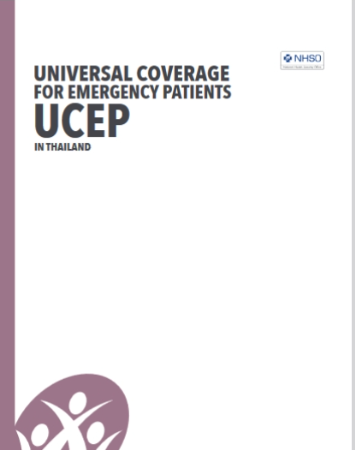[NHSO series] Universal Coverage for emergency patients (UCEP) in Thailand
GLOSSARY
EMERGENCY MEDICINE
In accordance with the Emergency Medical Act of 2008, “emergency medicine”refers to emergency operations, education, training, evaluation research and assessment, management, and treatment of emergency patients and prevention of emergency illnesses
EMERGENCY PATIENT
According to the 2008 Emergency Medical Act, “emergency patient” meansa person who is injured or has a sudden illness that is a threat to the life orfunction of vital organs and requires immediate evaluation, management,and treatment to prevent death or aggravation of that injury or illness.
CRITICAL EMERGENCY PATIENT (CODE RED)
“Critical emergency patient” means an emergency patient who has beendiagnosed and screened for injuries or a sudden illness and is in criticalcondition in accordance with the criteria of the Emergency Pre-authorizationprogram of the National Institute of Emergency Medicine (NIEM) and in accordance with Article 4 of the Ministry of Public Health’s Notification on the Rules, Procedures, and Conditions for Emergency Patient Assistance and Remediation, Resource Mobilization, and Referral of Patients to other Hospitals. Critical emergency patient (Code Red) denotes an injured person or person who has a sudden illness which is life-threatening if not treated immediately. The illness or injury can be one that affects the respiratory, circulatory, or nervous system. These patients have a high chance of death or
risk of severe and sudden complications. Thus, the “Code Red” indication is to alert practitioners that this case is a critical emergency patient in accordance with the Universal Coverage for Emergency Patients (UCEP) policy.
EMERGENCY SCREENING AND SORTING SYSTEM TO APPROVE RIGHTS
(EMERGENCY PRE-AUTHORIZATION)
The Emergency Pre-authorization program was developed by NIEM to efficiently screen and sort emergency patients to ensure they are afforded their full rights, and as a tool for hospitals and clinics to efficiently evaluate a patient’s condition in a standard and uniform way across the country.

